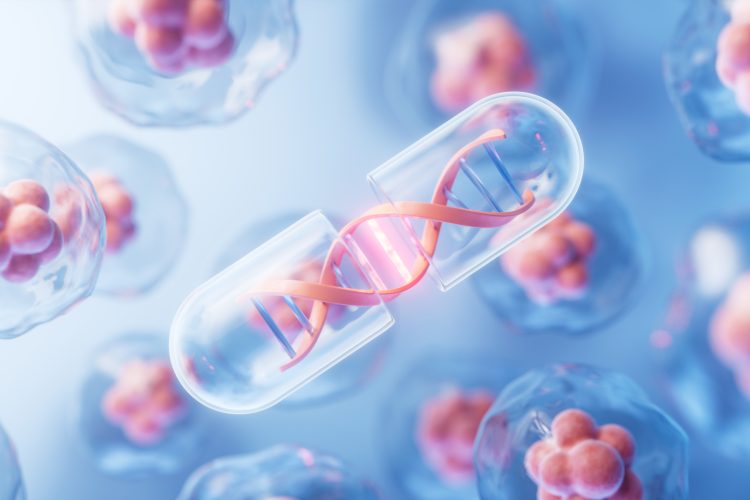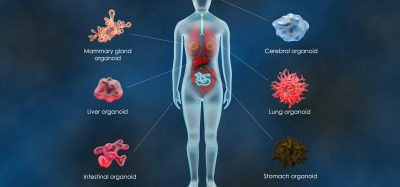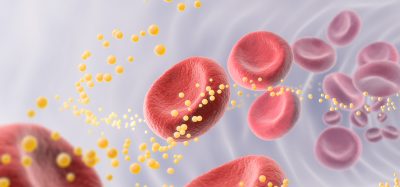Cracking the code to scalable cell and gene therapy
Posted: 13 May 2025 | Drug Target Review | No comments yet
Cell and gene therapy is rapidly transforming the treatment of complex diseases, yet scaling production efficiently remains a challenge. Dr Tia Harmon from PHC Corporation of North America explores the innovations that are optimising cell expansion to enhance the discovery of advanced therapies.


Cell and gene therapy (CGT) is advancing rapidly, offering new treatments for complex conditions such as cancer and genetic disorders. As these therapies evolve, the demand for more efficient and reliable methods of cell expansion – an essential step in CGT manufacturing – becomes increasingly critical.
To facilitate this important process, the Biomedical division of PHC Corporation (PHC) has developed a cell expansion bioreactor system – a technology that is set to impact the future of CGT. Dr Tia Harmon manages the CGT portfolio for PHC Corporation of North America (PHCNA) and is passionate about how these technologies can empower researchers and accelerate CGT development.
Empowering cell and gene therapy research
Cell and gene therapy is advancing drug development by offering targeted treatments that address the root causes of complex diseases. As the field advances, CGT has the potential to provide long-lasting, personalised therapies that transform the way we approach treatment, pushing the boundaries of traditional medicine.
At PHCNA, Dr Harmon is responsible for managing the company’s cell and gene therapy portfolio. Her role focuses on advancing solutions for cell preservation, growth, and the development of new therapies, which are critical for accelerating the development of safe and effective treatments.
The LiCellGrow Cell Expansion Bioreactor System, currently under development, is being designed to accelerate the production of therapies by providing real-time visualisation of metabolic changes in cells. This capability is intended to allow researchers to make informed adjustments to the cell culture environment to help optimise cell growth conditions. The system will use proprietary in-line sensor technology developed by PHC to monitor key metabolic markers such as glucose and lactate concentrations, pH, and dissolved oxygen levels. These markers are crucial for understanding cell health and metabolism, enabling more accurate control over the cell expansion process, which is essential for producing consistent, high-quality cells for therapies.
Cell expansion is the process of growing a specific population of cells in a controlled environment to increase their number for use in therapies or research.
Cell expansion is the process of growing a specific population of cells in a controlled environment to increase their number for use in therapies or research. In cell and gene therapy, this process is critical for producing sufficient quantities of healthy cells that can be engineered or manipulated to treat diseases. The cells are typically cultured in bioreactors where factors like nutrients, oxygen and temperature are carefully controlled to optimise growth and maintain cell quality.
The differentiator of PHC’s cell expansion system in development will be its ability to continuously monitor glucose and lactate concentrations in real time and then automatically adjust the cell culture accordingly. The data generated by these sensors will be invaluable in determining when the culture media should be replenished. By making this determination automatically, it is being designed to ensure that the cells are maintained in optimal conditions without requiring manual intervention. This level of automation has the potential to improve both efficiency and consistency in the manufacturing process, making it a vital tool in the production of CGT therapies.
The power of continuous metabolic monitoring
One of the key benefits of this technology is its ability to visualise continuous metabolic changes. Ongoing monitoring allows researchers to observe cellular processes that were previously difficult or impossible to detect and its steady stream of data can reveal subtle shifts in cell metabolism that could significantly impact the quality and growth of cells.
The most important benefit of visualising metabolic changes in real time is that the output of continuous data has the potential to uncover previously unobservable changes in the state of cells over time.
As Dr Harmon explains, “The most important benefit of visualising metabolic changes in real time is that the output of continuous data has the potential to uncover previously unobservable changes in the state of cells over time and allow researchers to make more informed research decisions.” With the media exchange occurring automatically based on the metabolic state of the cells, LiCellGrow will seek to create an environment that fosters healthier, more robust cell populations.
This continuous monitoring capability, currently available in PHC’s LiCellMo® Live Cell Metabolic Analyser, also reduces the need for repeated sampling, which not only saves time but also ensures that the sterility and integrity of the cells are maintained. A closed system such as this is especially important in the context of CGT manufacturing, where contamination or disruption of the culture process can lead to costly delays or compromised therapy quality.
Complementary technologies
The LiCellGrow system is being designed to build on the technology used in LiCellMo, a tool that has been available to research laboratories across the world since 2024. While both products monitor key metabolic markers like glucose and lactate concentrations, they will serve complementary functions in the cell culture process.
While LiCellMo is designed for research purposes, providing continuous data that aids in understanding cell metabolism and supporting CGT discoveries, LiCellGrow is being designed to automate the media exchange process based on the measurement of glucose and lactate concentration, to optimise cell culture conditions and improve efficiency for CGT production.
Dr Harmon notes the synergy between the two products, emphasising how the company’s collaboration has contributed to their development. “It’s an example of synergy between the Biomedical division and IVD division of PHC Group, which is a global collection of healthcare companies that share precision technology and resources to improve health.”
By leveraging continuous metabolic monitoring, both systems will allow for more precise control over cell culture environments, improving the overall quality and yield of CGT products.
Addressing key challenges in CGT manufacturing
The manufacturing of cell-based gene therapies is not without its challenges. Two of the most significant hurdles are maintaining consistent cell quality and ensuring reproducibility throughout the production process. As Dr Harmon points out, “Since the patient’s own cells are used as raw materials, it’s essential to maintain stable cell quality when producing new cells, to counteract any natural variations in cell characteristics.”
Traditional methods of assessing cell quality often rely on end-product sampling, which can be inefficient and may lead to suboptimal results. This process can also increase the risk of contamination or disruption in the culture environment. Providing real-time insights into the metabolic status of cells enables researchers to replace the media based on the exact metabolic needs of the cells.
Shaping the future of cell and gene therapy
Looking towards the future, the potential of such cell expansion technology systems is vast. CGT is revolutionising the treatment of previously untreatable diseases, and innovations like LiCellGrow, when it is available, are being designed to play a critical role in scaling up production and improving the consistency of therapies. As Dr Harmon shares, “LiCellGrow is being designed to raise the bar for quality and efficiency in cell expansion for pharmaceutical research. By combining state-of-the-art monitoring with optimal cell culture conditions, our goal is to both support new discoveries and help ramp up production of new therapies.”
The system’s ability to automate and optimise the cell culture environment is being designed to not only accelerate the production process but also ensures that cells are cultivated under the best conditions possible. This is essential in the context of CGT, where the success of therapies depends on the quality and quantity of the cells being used. Advancing both research and manufacturing capabilities is helping to reveal the full potential of cell and gene therapies, ultimately benefitting patients worldwide.


Dr Tia Harmon is a technical product sales specialist in cell and gene therapy for PHC Corporation of North America (PHCNA), which is a member of global healthcare company PHC Group. She is committed to providing solutions for cell metabolism research that aid in the development of disease treatments. Tia has worked in the industry for 20 years in government, academic and biotechnology sectors. She holds a PhD in biomedical sciences from Morehouse School of Medicine. Tia is passionate about expanding knowledge surrounding cell and gene therapy.
Related topics
Biomarkers, Biopharmaceuticals, Cell Cultures, Cell Therapy, Cell-based assays, Gene Therapy, Lab Automation, Regenerative Medicine, Upstream Bioprocessing
Related conditions
Cancer, Genetic diseases
Related organisations
PHC Corporation of North America (PHCNA)








